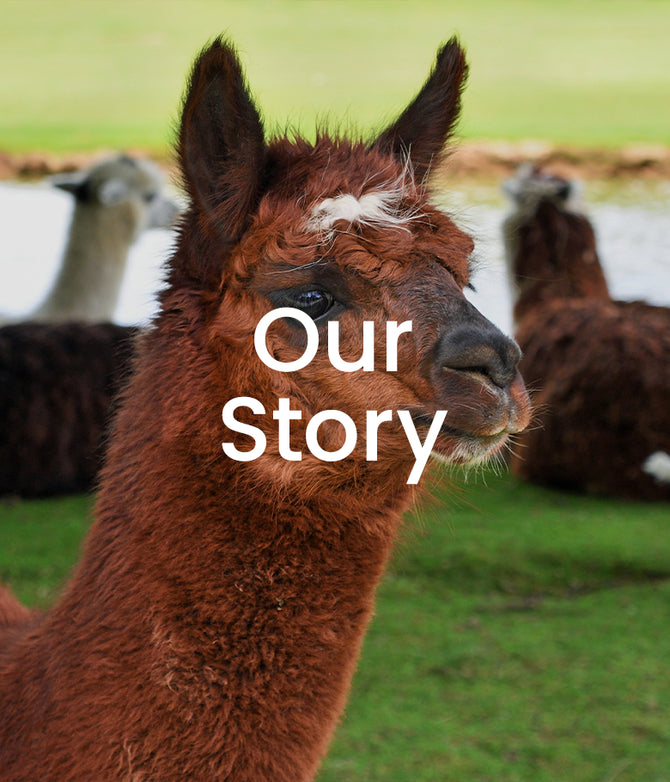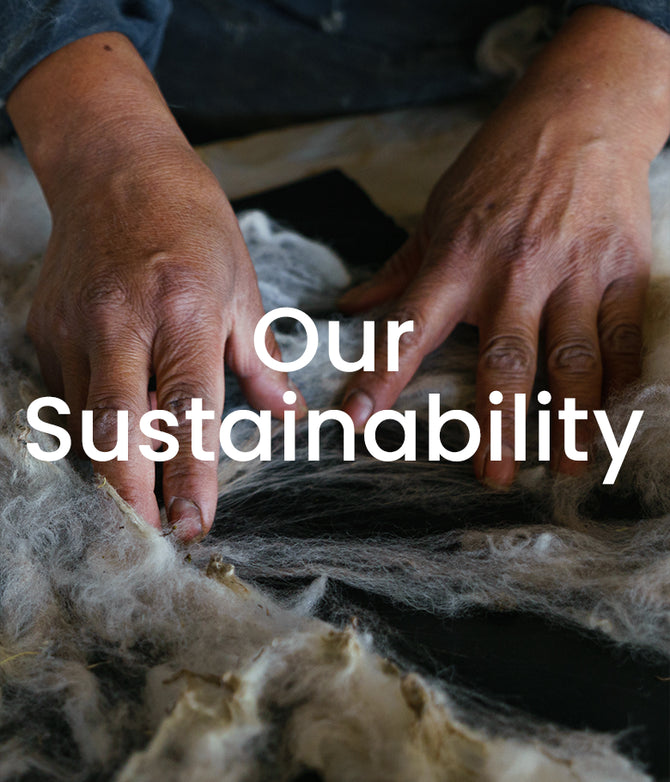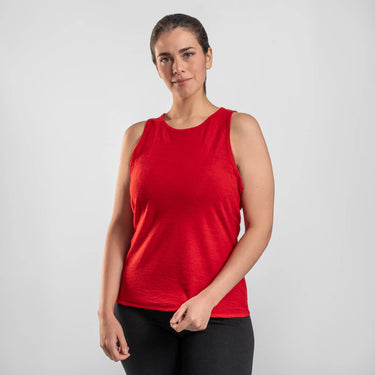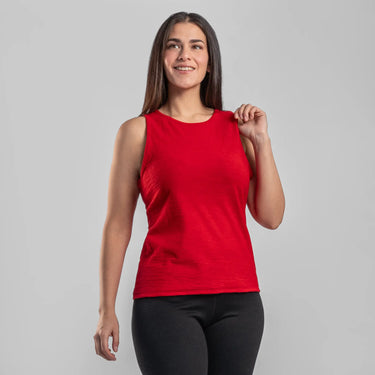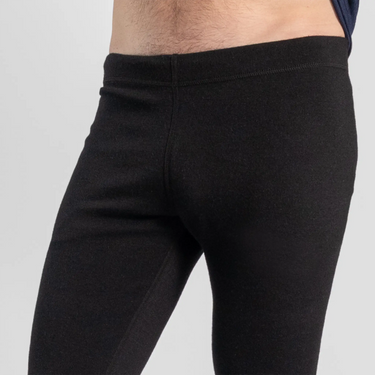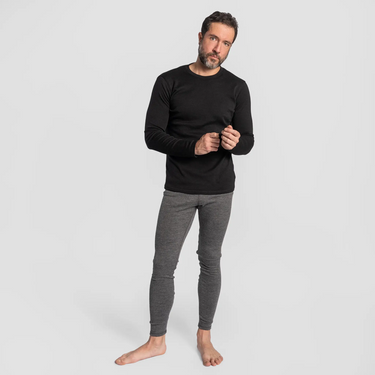Marcahuasi:
A Hidden Andean Sanctuary Above the Clouds
Published May 6, 2025
1. Say Goodbye to Single-Use Plastics
Single-use plastics are a huge environmental problem, but small tweaks in your daily habits can make a big difference:
- Bring reusable bags: Make or buy groceries and produce bags to use instead of plastic ones. Keep them by the door or in your car so you never forget them.
- Ditch bottled water: Invest in a reusable water bottle [1]. If tap water isn’t safe, boil or filter it instead.
- Carry a reusable coffee cup: Even “eco-friendly” disposable cups create waste if not disposed of properly.
- Pack a zero-waste kit: Include bamboo or metal cutlery, a reusable straw, and a container for takeout. It might take practice, but soon it’ll feel natural.
2. Use Less Water and Energy
Every drop counts, and every watt matters. Here are a few small changes to reduce your footprint:
- Shorten your showers: A quick shower saves both water and energy. Bonus: it’s better for your skin too! [2]
- Turn off the lights: Unplug appliances and switch off lights when you’re not using them [3].
- Hang clothes to dry: Whenever possible, skip the dryer and hang your clothes. It’s gentler on fabrics and the planet.
- Flush smarter: If your toilet has an eco-flush option, use it. No eco-flush? Place a filled bottle in the tank to reduce water per flush.
At Arms of Andes we make our gear from 100% Royal Alpaca Wool of 18-18.5 microns.
3. Make Eco-Conscious Food Choices
Food is one of the easiest ways to live more sustainably:
- Buy local and seasonal: This reduces transportation emissions and supports local farmers [4].
- Cook from scratch: Homemade meals usually come with less packaging and waste.
- Be mindful about meat: Choose ethically raised options, like free-range chicken or grass-fed beef, and support sustainable farming practices. Exploring plant-based meals occasionally can also make a difference [5].
- Opt for sustainable groceries: Shop at packaging-free or bulk stores. No access? Buy in bulk at your regular store to minimize waste.
4. Rethink Your Transportation Habits
How you get around affects your carbon footprint. Start small:
- Walk or bike more: Even once a week can make a difference.
- Use public transport: Replace car trips with bus or train rides when possible [9].
- Carpool: Sharing rides with colleagues or friends reduces emissions.
- Fly less: For shorter trips, consider buses or trains. Offset your carbon emissions for long flights.
5. Choose Sustainable Fashion
The fashion industry is one of the largest polluters, but your wardrobe can make a difference:
- Avoid fast fashion: Look for quality over quantity. Cheaper often means corners were cut in ethics and sustainability.
- Buy second hand: Thrift stores and online resale platforms are great for finding unique, affordable items.
- Support eco-conscious brands: Do your research and choose brands that prioritize sustainability, like Arms of Andes, which uses 100% alpaca wool and natural dyes [6].
- Host clothing swaps: A fun way to give new life to unused items in your closet [7].

6. Upgrade Your Hygiene and Cleaning Habits
Small changes to your personal care and cleaning routines can have a big impact:
- Switch to bamboo* toothbrushes: Look for ones with compostable bristles and packaging.
- Choose steel razors: A durable, waste-free alternative to disposable razors.
- Use natural options: Biodegradable shampoos, soaps, and detergents are better for the planet.
- Use menstrual cups and fabric sanitary towels: They take a little getting used to, but you won’t go back when you do!
- Clean with vinegar and baking soda: These simple ingredients work wonders around the house and are free of harmful chemicals [8].
* When choosing products made from bamboo, try to ensure the bamboo comes from sustainable sources.
7. Embrace Nature and DIY Solutions
Spending time outdoors and trying DIY solutions are both fun and sustainable:
- Grow your own vegetables: Even a small herb garden on a windowsill can make a difference.
- Start composting: Turn food scraps into nutrient-rich compost for your garden. No garden? Check if your city collects food waste.
- Connect with nature: Spending time outside reduces stress and reminds us why protecting the planet matters.
- Join community initiatives: Participate in clean-ups or tree-planting events.
8. Be Mindful About Waste
Rethinking how you handle waste is key to sustainable living:
- Reuse before you recycle: Find new uses for things before throwing them away.
- Donate or swap: Let someone else enjoy what you no longer need.
- Avoid expedited shipping: One-day deliveries often mean more vehicles on the road, increasing emissions.
Sustainable living starts with REDUCING waste, REPAIRING and/or REUSING broken/unused items, before RECYCLING or, when possible, COMPOSTING them.
Why Small Steps Matter
You might think, “Will my tiny changes really help?” The answer is yes. If everyone made just one or two of these adjustments, the collective impact would be enormous. And remember, you don’t have to do everything at once. Pick a couple of these tips to start with, and add more as you go. Before you know it, living sustainably will feel like second nature.
So, are you ready to make 2024 your most sustainable year yet? Small steps today can lead to a greener tomorrow. Let’s get started—one habit at a time!

At Arms of Andes we make our gear from 100% Royal Alpaca Wool of 18-18.5 microns.
Reading time: 5 minutes
By Lesia Tello & Jordy Munarriz
More Than a Destination, a Portal to the Sacred
While most travelers to Peru find themselves in the well-worn paths of Cusco and the Sacred Valley, few have heard of Marcahuasi, a mystical stone forest hidden high in the Andes just a few hours from Lima. Perched at 4,000 meters above sea level, this ancient plateau feels less like a tourist destination and more like a portal: to history, to nature, and perhaps even to something otherworldly.
We set out from Lima early one May morning—my partner, Leo, two close friends, Rolo and Kendy, and I—with little more than backpacks, thermoses, and a quiet craving for adventure. What followed was a two-day, one-night journey that would test our lungs, expand our perspectives, and introduce us to a sacred rhythm of land and stars.

Getting There: Lima to San Pedro de Casta
Our trip began in Lima at 7 a.m., when we caught a colectivo to Chosica. The hour-long ride brought us to Parque Echenique, a bustling plaza where locals and travelers alike gather for food and connections. We grabbed a quick breakfast—fresh juice and warm bread rolls—then boarded a microbus headed for San Pedro de Casta, a small village nestled at 3,180 meters above sea level.

The ride, which lasted about three hours, climbed steadily into the green folds of the Andes. May is an excellent month to visit: the rainy season has just ended, leaving behind lush hillsides and full creeks, but skies are generally clearer and temperatures more manageable.
San Pedro de Casta, a quiet and humble village, welcomed us with bright sun and cooler air. Locals received us with warmth and curiosity. For lunch, we indulged in crispy fried trout served with a simple salad, a staple in many Andean villages. It was hearty, fresh, and gave us the energy we needed for the next leg of our journey: the hike up to Marcahuasi.

San Pedro de Casta.


6. Upgrade Your Hygiene and Cleaning Habits
Small changes to your personal care and cleaning routines can have a big impact:
- Switch to bamboo* toothbrushes: Look for ones with compostable bristles and packaging.
- Choose steel razors: A durable, waste-free alternative to disposable razors.
- Use natural options: Biodegradable shampoos, soaps, and detergents are better for the planet.
- Use menstrual cups and fabric sanitary towels: They take a little getting used to, but you won’t go back when you do!
- Clean with vinegar and baking soda: These simple ingredients work wonders around the house and are free of harmful chemicals [8].
* When choosing products made from bamboo, try to ensure the bamboo comes from sustainable sources.
7. Embrace Nature and DIY Solutions
Spending time outdoors and trying DIY solutions are both fun and sustainable:
- Grow your own vegetables: Even a small herb garden on a windowsill can make a difference.
- Start composting: Turn food scraps into nutrient-rich compost for your garden. No garden? Check if your city collects food waste.
- Connect with nature: Spending time outside reduces stress and reminds us why protecting the planet matters.
- Join community initiatives: Participate in clean-ups or tree-planting events.
At Arms of Andes we make our gear from 100% Royal Alpaca Wool of 18-18.5 microns.
The Ascent: Choosing the Long Way
From the village, two main paths lead to the plateau: the steep "short route" and the more gradual "long route." At a fork in the road, two weathered wooden signs marked the options. We decided on the long trail, which is less strenuous and follows a dirt track used by locals and their burros. This path offered us a gentler ascent, allowing our bodies to acclimate as we climbed roughly 800 meters over the next three hours.
The views were worth every step. As we ascended, the valley opened behind us, revealing dramatic ridges and distant snowcaps. Along the trail, we passed locals carrying supplies to the top—firewood, tents, and snacks to sell to campers. Some even offered rides in small cars for those who wanted to skip the hike entirely, a good option for anyone concerned about altitude sickness.
As we approached the top, a dense fog began to roll in, cloaking the mountain in silence. Visibility dropped sharply. It felt like walking through a dream, every step guided by instinct and memory rather than sight.
Camping in the Clouds: A Sacred Night Above the World
We reached Marcahuasi's campsite—known as "the amphitheater"—just as the temperature began to dip. The clouds around us were thick, and we could only see a few meters ahead. Locals told us this often happens during this time of year, but the fog almost always clears eventually—and we held onto that hope.
We quickly set up our tents and rented thick Andean blankets (the iconic Peruvian "tiger blankets") and sleeping mats from local vendors who make the trek up weekly.
As darkness fell, we struggled to start a fire in the moist, oxygen-thin air. But eventually, flames took hold, and we huddled together with mugs of hot tea and packets of soup. The fog was relentless, concealing the famed night sky. Still, we waited, hopeful.
Around midnight, our patience was rewarded. The sky opened suddenly, revealing a cosmic masterpiece: stars spilled across the sky, with the Milky Way streaking from one horizon to the other. We saw shooting stars and constellations we never knew existed. Marcahuasi is famous for its clear skies and astronomical visibility, and some say it is also a hotspot for UFO sightings. Local legends abound of strange lights and unexplainable phenomena—stories we heard whispered around the campsite, adding a surreal flavor to the night.
I couldn't stay outside long. The altitude had caught up with me. My head throbbed and nausea crept in—a classic case of soroche. I slipped into the tent, bundled myself tightly, and tried to rest while the others lingered around the fire.

At Arms of Andes we make our gear from 100% Royal Alpaca Wool of 18-18.5 microns.
160 UltralightWomen's Alpaca Wool
Hiking T-Shirt
160 Ultralight
Relaxed FitWomen's Alpaca Wool Leggings 300
Lightweight

For snowboarders, skiers, and winter hikers, weight matters. Every gram counts when you're climbing, carrying gear, or navigating the slopes. Alpaca wool’s unique insulation properties allow for lightweight warmth, meaning you stay protected without unnecessary bulk.
Five Reasons to Choose Alpaca Wool for Snow Sports
Alpaca wool is the ultimate base and mid layer material for tackling the demands of skiing and snowboarding. Its unique properties make it an exceptional choice for base and mid layers, ensuring comfort and performance on the slopes.
1. Exceptional Warmth
Alpaca wool fibers feature semi-hollow cores, providing incredible insulation. Combined with their natural crimp (waviness), these fibers trap heat efficiently,
2. Breathable and Moisture-Wicking
One of alpaca wool’s standout qualities is its ability to wick moisture away from your skin while remaining highly breathable. This means you stay dry and comfortable, even during intense physical activity. Alpaca wool base layers, such as leggings and shirts, excel in keeping you warm and sweat-free.
3. Temperature Regulation
Alpaca wool’s unique ability to balance warmth and breathability helps regulate your body temperature. Whether you're racing downhill or waiting for the ski lift, alpaca wool keeps you warm in the cold and prevents overheating during activity.
4. Lightweight and Flexible
Thanks to its excellent insulating properties, alpaca wool keeps you warm without adding bulk. This lightweight quality ensures freedom of movement—crucial for maintaining balance and agility on the slopes.
At Arms of Andes we make our gear from 100% Royal Alpaca Wool of 18-18.5 microns.
Men's Alpaca Wool Jacket
420 Midweight Full-Zip

Relatedcontent
Bamboo:
A fast-growing plant often used for making sustainable products like toothbrushes and cutlery.
Biodegradable:
Materials that can break down naturally without harming the environment.
Bulk stores:
Shops where you can buy products in large quantities, often with minimal packaging.
Carbon footprint:
The total amount of greenhouse gases produced directly or indirectly by human activities.
Composting:
A process where organic waste decomposes into nutrient-rich material for gardening.
Ethically raised:
Livestock or poultry that is raised in humane and environmentally responsible ways.
Fast fashion:
Cheap, mass-produced clothing often linked to environmental and ethical issues.
Natural dyes:
Coloring substances derived from plants, animals, or minerals, used to color fabrics sustainably.
Sunrise Over the Clouds
The next morning, the cold lifted with the first glow of dawn. We woke early to hike to a nearby overlook, a cliff's edge that opened into a vast sea of clouds below. The sunrise painted the sky in soft yellows and blues while the mountain shadows stretched and danced. Standing above the clouds was humbling. It felt like floating between worlds.
After breakfast, we packed our gear but left it at the campsite to explore the plateau. Marcahuasi is known for its massive stone formations—some natural, some believed to be sculpted by ancient hands. Faces, animals, and symbols seemed to rise from the earth: a seal here, a human profile there. Some believe these are remnants of a lost civilization, others call it pareidolia—our brains finding patterns in randomness. Either way, it was magical.
We visited the "Fortaleza," an elevated area with commanding views, and several small lakes that mirrored the sky. The trails, however, were poorly marked, and we lost our way more than once. Thankfully, other travelers appeared from various directions, guiding us back to familiar terrain.


Left: The iconic "Monument to Humanity," a sacred rock formation in Marcahuasi believed by locals to represent the universal human face — a symbol of connection across cultures. Right: A hiker walks past another of Marcahuasi’s enigmatic stone formations, shaped like a human profile and carved naturally over millennia by wind and time.
Above: The iconic "Monument to Humanity," a sacred rock formation in Marcahuasi believed by locals to represent the universal human face — a symbol of connection across cultures. Down: A hiker walks past another of Marcahuasi’s enigmatic stone formations, shaped like a human profile and carved naturally over millennia by wind and time.
The Descent and Final Offerings
At around 10 a.m., we began our descent via the shorter path. This trail is steep and narrow, but also incredibly scenic. It winds past ancient chullpas, pre-Columbian funerary towers built by Andean cultures, and apachetas, small conical piles of stones left by travelers to honor Pachamama (Mother Earth) and the Apus (mountain spirits).
We paused to build our own apacheta to leave an offering—several stones carefully stacked in gratitude, in thanks for protecting us during the steep and challenging stretches of the journey. It’s a ritual shared by generations of Andean people and still practiced today—one that many modern travelers have learned to emulate in an act of humility and respect.
Back in San Pedro de Casta, we ate a final trout lunch and boarded the bus back to Chosica, physically tired but emotionally full.



Placing stones in an apacheta at Marcahuasi—a sacred act of gratitude for protection during mountain journeys.
Why Marcahuasi Matters
Marcahuasi isn’t an easy trip. The altitude is intense, the weather unpredictable, and the trails unclear. But that’s precisely what makes it so special. This isn’t a curated tourist experience; it’s an invitation to connect with nature, with history, and perhaps with the cosmos itself.
If you go, go prepared—physically, mentally, and spiritually. Bring warm clothes, a good sleeping bag, a flashlight, and a respectful heart. Support local vendors. Learn the stories of the land. And if you’re lucky, you might just see more than stars in the night sky.
Have you been to Marcahuasi or dream of going? Let us know!—and if you're planning your trip, pack light, tread gently, and look up.

A serene moment by one of Marcahuasi’s hidden lakes, shared with a local dog who led us part of the way.

Glossarykeywords
Altitude Sickness (Soroche):
A common condition experienced when ascending to high elevations too quickly, often causing headaches, nausea, and fatigue.
Andean Blankets (Tiger Blankets):
Thick, iconic Peruvian blankets used by locals in the Andes for warmth. They typically feature bold patterns or animal prints and are handmade to endure high-altitude climates.
Apacheta:
A conical pile of stones left by travelers in the Andes as an offering to the Apus and Pachamama, often placed on high mountain passes as a ritual of gratitude and protection.
Apus:
Sacred mountain spirits in Andean cosmology, believed to protect the people and guide travelers. Mountains like those surrounding Marcahuasi are often revered as living entities.
Chullpas:
Pre-Columbian funerary towers built by ancient Andean cultures, often found in high-altitude regions. These stone structures are part of the historical and spiritual landscape of Marcahuasi.
Colectivo:
A shared public transportation vehicle, typically a small van or car, used in Peru for affordable and semi-flexible travel between towns and cities.
Cosmic Visibility:
Refers to the exceptionally clear night skies in high-altitude areas like Marcahuasi, where stargazing includes views of the Milky Way and frequent meteor sightings.
Fog (Cloud Forest Effect):
Marcahuasi is known for frequent fog and low-lying clouds due to its elevation. These clouds can create a mystical atmosphere but often clear to reveal stunning starry skies.
Microbus:
A small public bus used for inter-town travel in Peru.
Pareidolia:
The psychological tendency to perceive meaningful shapes, such as faces or animals, in random patterns—often experienced when observing Marcahuasi's rock formations.
Soroche:
The local term for altitude sickness in Peru. See: Altitude Sickness.
The Fortaleza:
A high vantage point in Marcahuasi offering panoramic views of the plateau. It's one of the key landmarks along the less-marked trails on the site.
UFO Sightings:
Marcahuasi has become known for alleged sightings of unidentified flying objects (UFOs), contributing to its mystical and otherworldly reputation.
At Arms of Andes we use the finest Royal Alpaca Wool sourced in the Peruvian Andes. The Andean alpacas naturally developed over thousands of years in harsh conditions in high altitudes, creating the perfect fiber for outdoor gear that helps you stay protected in all conditions. Discover our outdoor apparel.

In the textile industry, companies that produce garments made entirely from Merino wool typically use fibers that are 17.5 microns or finer to minimize any itchiness or roughness, [4] ensuring comfort for their customers. A study conducted by the Division of Dermatology at the University of Louisville in 2019 evaluated the effects of wearing these garments on individuals with skin sensitivities, such as atopic dermatitis or eczema. In the study, 25 participants wore only Merino wool garments of 17.5 microns for six weeks and cotton garments of 21 microns for six weeks more, while another group of 25 followed the reverse order. Participants reported significant changes when switching from cotton to Merino wool, with those who started in Merino wool experiencing a decrease in their eczema during the first weeks. [4]
| Properties | Royal Alpaca Wool | Cashmere | Merino Wool |
|---|---|---|---|
| Weight | Lightest | Light | Heavier |
| Fiber Structure | Semi-Hollow | Solid | Solid |
| Thermal Capacity | 5 x Warmer | 3 x Warmer | Warm |
| Water Retention | Absorbs 10% of weight | Shrinks in water | Absorbs 10%
of weight |
| UV Protection | Yes | Yes | Yes |
| Fiber Scales | Smoothest | Softest | Prickly |
| Microns (average) | 17.5 | 14 | 18 |
| Tensile Strength | Highest | Weak | High |
| Odor Resistance | Yes | Yes | Yes |
| Wrinkle Resistance | Yes | Yes | Yes |
| Hypoallergenic (Lanolin free) | Yes | Yes | No |
The Final Verdict: And the Winner Is...
After a comprehensive analysis of alpaca, merino, and cashmere, it's clear that cashmere, while undeniably luxurious, lacks the durability required for outdoor garments. However, it excels as a high-end fiber for special occasions and elegant attire.
In the head-to-head battle between alpaca and merino, alpaca emerges as the undisputed champion! Alpaca wool surpasses merino in warmth, lightness, softness, and strength. It's the ultimate choice for those seeking performance, comfort, and sustainability.
Authors & Researchers

Lesia tello
Biologist and hiking enthusiast with a deep admiration for nature and the intricate mechanisms of life. With a background in biochemistry and a master’s degree in education, she blends science with adventure, exploring how we interact with the natural world and sharing insights on outdoor experiences.

Jordy Munarriz
Environmental Engineer with a master’s degree in renewable energy and a specialization in sustainability. A passionate traveler and advocate for responsible tourism, he captures the essence of exploration through storytelling, inspiring others to connect with nature in a conscious and meaningful way.
Authors & Researchers

Lesia tello
Biologist and hiking enthusiast with a deep admiration for nature and the intricate mechanisms of life. With a background in biochemistry and a master’s degree in education, she blends science with adventure, exploring how we interact with the natural world and sharing insights on outdoor experiences.

Jordy Munarriz
Environmental Engineer with a master’s degree in renewable energy and a specialization in sustainability. A passionate traveler and advocate for responsible tourism, he captures the essence of exploration through storytelling, inspiring others to connect with nature in a conscious and meaningful way.
Alpaca wool (particularly the royal and baby alpaca fiber grades) is non-itchy, warm, and performs better than merino and other types of sheep's wool. This makes alpaca wool perfect for your outdoor clothing, slipper socks, and even underwear.

Glossarykeywords
Altitude Sickness (Soroche):
A common condition experienced when ascending to high elevations too quickly, often causing headaches, nausea, and fatigue. It’s important to acclimate gradually in places like Marcahuasi, which sits at 4,000 meters above sea level.
Andean Blankets (Tiger Blankets):
Thick, iconic Peruvian blankets used by locals in the Andes for warmth. They typically feature bold patterns or animal prints and are handmade to endure high-altitude climates.
Inti Raymi:
The Festival of the Sun, an important Andean celebration honoring Inti, the sun god, and marking the winter solstice.
Apacheta:
A conical pile of stones left by travelers in the Andes as an offering to the Apus and Pachamama, often placed on high mountain passes as a ritual of gratitude and protection.
Apus:
Sacred mountain spirits in Andean cosmology, believed to protect the people and guide travelers. Mountains like those surrounding Marcahuasi are often revered as living entities.
Fog (Cloud Forest Effect):
Marcahuasi is known for frequent fog and low-lying clouds due to its elevation. These clouds can create a mystical atmosphere but often clear to reveal stunning starry skies.
The Fortaleza:
A high vantage point in Marcahuasi offering panoramic views of the plateau. It's one of the key landmarks along the less-marked trails on the site.
UFO Sightings:
Marcahuasi has become known for alleged sightings of unidentified flying objects (UFOs), contributing to its mystical and otherworldly reputation.
References:
[1] Mitchell, Ross E. "Community perspectives in sustainable tourism: lessons from Peru." Tourism, recreation and sustainability: Linking culture and the environment. Wallingford UK: CABI, 2008. 158-182. https://doi.org/10.1079/9781845934705.0158
[2] UNESCO World Heritage Centre. Manú National Park. Retrieved from https://whc.unesco.org/en/list/402
[3] De la Cadena, Marisol. "Indigenous cosmopolitics in the Andes: Conceptual reflections beyond “politics”." Cultural anthropology 25.2 (2010): 334-370. https://doi.org/10.1111/j.1548-1360.2010.01061.x








